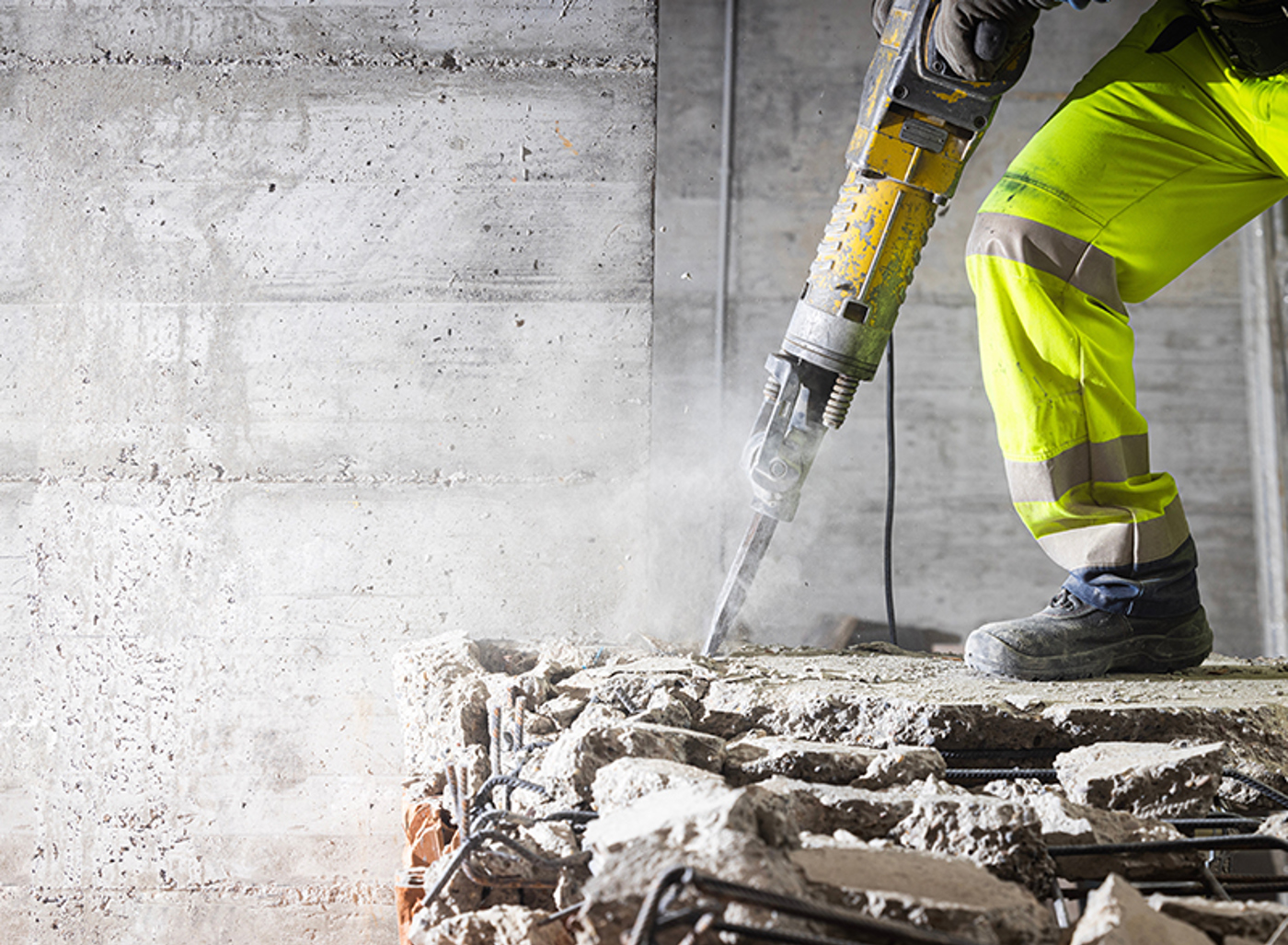
Power tool safety is always a priority on site – what do you need to consider and how can you keep on top of the tools?
![]()
As construction technology advances, power tool safety remains a critical concern for tradies, employers and contractors across the country.
Common injuries include cuts from circular saws, impact injuries from nail guns, eye injuries from grinding operations, and repetitive strain injuries from prolonged tool use. But many of these injuries could be prevented with proper training, equipment maintenance, and better safety protocols in place. This means going beyond simply handing someone a tool and expecting them to know how to use it safely. It requires a serious approach to training, maintenance, and supervision.
Essential safety protocols
Effective power tool safety begins with pre-use inspection. Every tool should be checked for damage, wear, or malfunction before use. This includes examining power cords for cuts or damage, checking guards and safety devices are in place and functioning, ensuring cutting blades are sharp and properly secured, and verifying that all safety features are operational.
Personal protective equipment is non-negotiable. Eye protection should be worn for all cutting, grinding, or drilling operations. Hearing protection is essential when using loud tools like circular saws or impact drivers. Respiratory protection may be required when working with materials that create dust or fumes. Appropriate hand protection should be used for all tasks, but workers must also be careful when wearing gloves around rotating tools where material getting entangled could be a risk.
Every worker should receive proper training on each type of power tool they'll use. This should cover not just operation, but also maintenance, safety features, and emergency procedures. Regular refresher training will help to reinforce safe practices and introduce workers to new safety features or techniques.
Technology and safety advances
Modern power tools incorporate increasingly sophisticated safety features that can significantly reduce injury risk. Cordless tools have eliminated many electrocution hazards and reduced trip hazards from power cords.
Battery technology has transformed the industry, with lithium-ion batteries providing consistent power throughout their charge cycle. This consistency helps prevent the kind of performance degradation that can lead to accidents when workers try to force underperforming tools. However, battery safety brings its own considerations, including proper charging procedures, storage temperatures, and replacement of damaged batteries.
Brake systems on circular saws are designed to stop blades immediately. One of leading power tool brand Makita’s most essential power tool safety systems is its Electric Brake, which rapidly stops the rotation of the blade, disc, or bit as soon as the trigger is released. This greatly reduces the chance of accidental injury after the tool is switched off and increases jobsite efficiency by reducing wait time between tasks. It is one way Makita tools incorporate a range of advanced safety features designed to protect the user, improve control, and extend the life of the tool.
Another critical innovation from Makita is Active Feedback-sensing Technology (AFT), which automatically shuts down the tool if it detects a sudden drop in rotation speed — typically caused by a bind-up or kickback. This is especially valuable in high-torque tools like angle grinders, chainsaws, or rotary hammers, as it prevents dangerous jerking or twisting that can harm the operator. Complementing this is Anti-Vibration Technology (AVT), a system that uses counterweights and vibration-absorbing materials to significantly reduce tool vibration. AVT enhances user comfort and reduces the risk of long-term injuries such as Hand-Arm Vibration Syndrome (HAVS), especially during prolonged use in demolition or chiselling tasks.
For improved control at startup, Makita integrates Soft Start technology in many of its power tools. This feature gradually increases the motor speed when the trigger is pulled, preventing sudden jerks and helping maintain precision, especially with larger tools like saws and grinders. Additionally, tools with a Torque Limiting Clutch are designed to disengage the drive if the bit or attachment binds, protecting the motor and preventing sudden torque transfer to the user — a common safety concern in rotary hammer and drilling applications.
Durability also plays a role in safety, and Makita addresses this with Extreme Protection Technology (XPT), which enhances resistance to water and dust ingress. This not only extends the tool’s service life but also reduces the likelihood of electrical failures in harsh jobsite environments.
Makita’s Star Protection Computer Controls offer intelligent communication between Makita batteries and tools. This system actively monitors for conditions such as overloading, overheating, or over-discharging. If any unsafe condition is detected, it limits current draw or shuts down the tool altogether to prevent damage and ensure user safety. Together, these integrated technologies represent Makita’s commitment to delivering not just performance, but also industry-leading protection on the job.
Dangers of dust
Some of the most common construction power tool safety concerns relate to dust. The use of cut-off saws, grinders, polishers, breakers and sanders can all contribute to dust dangers.
With workers 20 times more likely to suffer fatality due to exposure of airborne substances than from a workplace accident, according to Site Safe, adhering to strict dust inhalation protocols is an essential aspect of on site safety.
Effective extractive units act like an industrial vacuum. They remove dust from the captor hood, filter it and collect it for safe disposal. Selecting the right extraction unit is key to successfully controlling dust. Units should be suitable for the toxicity level and hazardous nature of the dust being extracted, as well as its size and type. Manufacturers of construction materials can advise whether the dust produced by their products is classified as low, medium, high class, or non-hazardous.
DeWalt’s 38L High Performance Dust Extractor is a shining example. It is H-class certified for 99.995% filtration efficiency, keeping harmful particles off site from dust generated from wood, plaster, cement and concrete and more. Its improved brush motor and its compatibility with DeWalt’s dust management airlock system, guarantees market leading performance.
Also on the dust control front, Makita offers the Auto-Start Wireless System (AWS). This system allows compatible tools and vacuums to communicate via Bluetooth so that the dust extractor powers on automatically when the tool is in use. It promotes a cleaner work environment and reduces the operator’s exposure to harmful airborne particles.
Maintenance and safety management
Tools should be serviced regularly by qualified technicians, with damaged tools being immediately repaired or removed from use. Storage also plays a crucial role in safety to protect tools from damage, prevent unauthorised use, and ensure tools are readily available. Secure storage can also reduce the chances of tool theft, which can lead to workers using unfamiliar replacement tools.
Open communication about power tool safety concerns is vital. Workers should feel comfortable reporting unsafe conditions, near misses, or making safety suggestions. Supervisors and managers should always model effective safety protocols and remember that their primary concern is that their staff and contractors to return home safely each day.
For more information, see:
